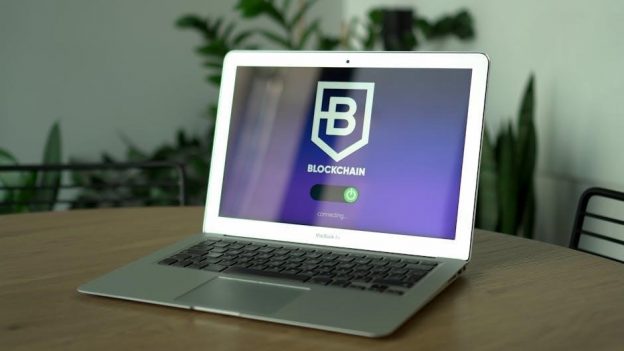SIE Exam Study Guide PDF: A Comprehensive Plan (Updated 12/03/2025)
Navigating the SIE exam requires a focused strategy‚ and a comprehensive study guide PDF is paramount for success; resources like Achievable and STC offer valuable materials.
These PDFs consolidate essential concepts‚ practice questions‚ and detailed explanations‚ streamlining your preparation process and maximizing your chances of passing this crucial FINRA exam.
Amazon also provides a 2025-2026 SIE Exam Prep PDF with 510 questions‚ ensuring thorough coverage of the securities industry essentials for effective exam readiness.
Understanding the SIE Exam
The Security Industry Essentials (SIE) exam‚ administered by FINRA‚ serves as a foundational assessment for individuals seeking to enter the securities industry. It’s a 90-minute‚ multiple-choice exam designed to test your understanding of fundamental industry concepts‚ regardless of your firm or role.
A well-structured SIE exam study guide PDF is crucial because it provides a centralized resource for mastering this material. These guides typically cover key areas like securities‚ market structure‚ regulatory basics‚ and prohibited practices. Resources like those offered by Achievable‚ Kaplan‚ and STC are designed to build your knowledge base quickly and efficiently.

Understanding the exam’s scope and utilizing a comprehensive PDF study guide will significantly enhance your preparation‚ ensuring you’re well-equipped to tackle the challenges and achieve a passing score. Don’t underestimate the power of focused study!
What is the SIE Exam?
The FINRA SIE Exam is a 90-question‚ multiple-choice assessment focused on fundamental securities industry knowledge. It’s a prerequisite for many registration exams‚ meaning you must pass the SIE before pursuing licenses like Series 6‚ 7‚ or 79. Crucially‚ the SIE exam doesn’t qualify you to sell securities; it simply demonstrates a baseline understanding of industry essentials.
A robust SIE exam study guide PDF is invaluable for navigating this exam. These PDFs consolidate complex topics into manageable sections‚ often including practice questions and detailed explanations. Providers like STC and Achievable specialize in creating these resources‚ ensuring comprehensive coverage of the exam’s content.
Utilizing a well-designed PDF study guide streamlines your preparation‚ allowing you to focus on mastering key concepts and building a solid foundation for future licensing exams.
SIE Exam Eligibility Requirements
Fortunately‚ the SIE exam has relatively open eligibility requirements‚ making it accessible to a wide range of individuals. You don’t need to be sponsored by a firm or even be currently employed in the financial industry to take the exam. However‚ all candidates must be at least 18 years old and have a high school diploma or equivalent.
Regardless of your background‚ a comprehensive SIE exam study guide PDF is essential for success. These guides‚ offered by providers like Achievable and STC‚ provide structured learning paths and practice questions tailored to the exam’s content.
Investing in a quality PDF ensures you’re well-prepared to meet the exam’s demands‚ even without prior industry experience. Remember to verify the latest requirements on the FINRA website before registering.
Key Content Areas of the SIE Exam

The SIE exam broadly assesses your understanding of essential securities industry concepts. Key areas include product and market knowledge‚ suitability‚ risk‚ and prohibited practices. Expect questions on various investment vehicles like stocks‚ bonds‚ and mutual funds‚ alongside regulations governing their sale.
A well-structured SIE exam study guide PDF is crucial for mastering these diverse topics. Resources from Kaplan and STC offer detailed coverage of each content area‚ often including practice questions and case studies. These PDFs help you identify knowledge gaps and focus your study efforts effectively.
Utilizing a PDF allows for focused learning‚ ensuring you’re prepared to tackle the exam’s breadth of material and demonstrate a solid foundation in securities industry essentials.
Choosing the Right SIE Exam Prep Materials
Selecting the appropriate SIE exam prep materials‚ particularly a study guide PDF‚ is vital for success. Consider your learning style and budget when evaluating options. A comprehensive PDF should cover all key content areas and offer ample practice questions.
Comparing courses like Achievable‚ Kaplan‚ and STC reveals varying approaches. Achievable emphasizes a unique learning method‚ while Kaplan and STC provide structured courses and extensive materials. A quality PDF complements these courses‚ offering a portable and focused study resource.
Prioritize materials with detailed answer explanations‚ as understanding why an answer is correct is as important as knowing the answer itself. A well-chosen PDF will significantly enhance your preparation and confidence.
Importance of a Study Guide PDF
A dedicated SIE exam study guide PDF is incredibly important due to its concentrated format and accessibility. It allows for focused review of crucial securities industry concepts‚ offering a portable study solution independent of internet access.
These PDFs often include hundreds of practice questions‚ mirroring the exam’s multiple-choice format‚ and provide detailed explanations for both correct and incorrect answers – a key element for solidifying understanding. Resources like those available on Amazon.com offer extensive question banks.
Furthermore‚ a PDF facilitates efficient note-taking and highlighting‚ enabling personalized learning. It’s a cost-effective supplement to broader prep courses‚ ensuring comprehensive coverage and boosting exam confidence.

Comparing SIE Exam Prep Courses
When evaluating SIE exam prep courses‚ consider how they integrate with a study guide PDF. Achievable stands out as a highly-rated resource‚ praised for its effective learning approach‚ while Kaplan offers a more traditional‚ structured curriculum.
STC (Securities Training Corporation) provides comprehensive materials‚ including practice tests‚ and often allows access to study materials without requiring a full course purchase. Comparing price‚ value‚ guarantees‚ and included materials is crucial.
Assess whether the course offers a downloadable PDF component for offline study. A strong course will complement a PDF guide‚ providing video lessons‚ live instruction‚ and personalized feedback‚ ultimately maximizing your preparation and exam success.
Top SIE Exam Prep Providers
Selecting the right provider is vital‚ and several options excel in SIE exam preparation‚ often incorporating robust study guide PDFs. Achievable consistently receives positive feedback‚ lauded as the best resource by many students for its engaging and effective learning methods.
Kaplan is a well-established name‚ offering comprehensive courses and materials‚ including detailed PDF study guides. STC (Securities Training Corporation) provides another strong contender‚ known for its thorough coverage and accessible practice tests‚ frequently offering study materials independently.
These providers understand the importance of a well-structured PDF as a core component of successful SIE exam preparation‚ ensuring candidates have a solid foundation of knowledge and practice resources.
Achievable SIE Prep
Achievable distinguishes itself as a top-rated SIE exam prep provider‚ particularly praised for its innovative learning approach and comprehensive study guide PDF. Students consistently highlight it as the “best resource” they’ve encountered‚ appreciating its effectiveness in simplifying complex securities industry concepts;

Their method focuses on active recall and spaced repetition‚ maximizing knowledge retention. The Achievable SIE prep course includes a detailed PDF study guide‚ supplemented by adaptive learning technology and a substantial question bank. This ensures candidates are thoroughly prepared for the exam’s content.

Many users report significant improvements in their understanding and confidence after utilizing Achievable’s materials‚ making it a highly recommended option for those seeking a robust and engaging prep experience.
Kaplan SIE Prep
Kaplan is a well-established name in test preparation‚ offering a comprehensive SIE exam prep course that includes a detailed study guide PDF. Their materials are known for their thorough coverage of the exam’s content areas‚ providing a solid foundation for candidates.
Kaplan’s SIE prep typically features on-demand video lectures‚ practice questions with detailed explanations‚ and realistic practice exams. The study guide PDF serves as a central resource‚ consolidating key concepts and providing a structured learning path. Kaplan often provides guarantees‚ adding value for students.
While potentially more traditional in its approach compared to newer providers‚ Kaplan remains a popular choice for those who prefer a structured and comprehensive learning experience‚ backed by a reputable brand.
STC (Securities Training Corporation) SIE Prep
STC (Securities Training Corporation) provides a robust SIE exam preparation solution‚ centered around their comprehensive study guide PDF and accompanying materials. They are a long-standing provider specifically focused on securities licensing exams‚ offering a deep understanding of the exam’s nuances.
STC’s SIE prep includes detailed text chapters‚ practice questions mirroring the exam format‚ and access to practice tests. Their study guide PDF is designed for thorough content review‚ ensuring candidates grasp essential industry concepts. Notably‚ STC offers a practice test‚ even without purchasing their full study materials.
STC’s approach is often favored by those seeking a highly focused and detailed preparation experience‚ emphasizing a strong grasp of the regulatory and conceptual foundations of the securities industry;
Utilizing Practice Tests for SIE Exam Success
Integrating practice tests is crucial when utilizing a SIE exam study guide PDF. These tests simulate the real exam environment‚ building confidence and identifying knowledge gaps. Resources like STC offer practice tests‚ even without purchasing complete study packages‚ providing immediate assessment opportunities.
Effective practice involves timed exams‚ mirroring the actual SIE’s constraints. This helps refine pacing and test-taking strategies. Analyzing incorrect answers within your study guide PDF reveals areas needing further attention. Consistent practice reinforces learned concepts and builds familiarity with question types.
Free SIE practice tests are available‚ offering a low-risk starting point. However‚ comprehensive prep courses‚ alongside a detailed study guide PDF‚ generally provide more realistic and extensive practice opportunities for optimal exam readiness.
Free SIE Practice Tests
Leveraging free SIE practice tests is a smart initial step when paired with your study guide PDF. These tests offer a risk-free way to gauge your baseline knowledge and familiarize yourself with the exam’s format and question styles. Several online platforms provide limited free assessments‚ allowing you to experience a condensed version of the real SIE exam.
While valuable‚ remember that free tests often have limited question pools. Supplementing them with a comprehensive study guide PDF and more extensive practice materials is essential for thorough preparation. Use free tests to pinpoint your weak areas‚ then focus your study efforts accordingly‚ referencing your PDF for detailed explanations.
Consider these tests as diagnostic tools‚ not definitive predictors of your score. A robust study plan‚ centered around a quality SIE exam study guide PDF‚ remains the cornerstone of success.
Benefits of Timed Practice Exams

Integrating timed practice exams into your SIE study routine‚ alongside your study guide PDF‚ is crucial for exam success. These simulations replicate the pressure of the actual exam environment‚ helping you build stamina and improve time management skills. Mastering the timing aspect is as important as knowing the material itself.
Timed exams force you to make quick decisions‚ mirroring the real test’s constraints. Analyzing your performance – identifying questions answered incorrectly and those taking too long – reveals areas needing further attention within your study guide PDF. This focused review maximizes efficiency.
Regularly utilizing timed practice tests builds confidence and reduces anxiety‚ ensuring you’re fully prepared to perform optimally on exam day. Remember to review explanations for both correct and incorrect answers to solidify your understanding.
SIE Exam Study Schedule & Strategies
Developing a structured study schedule‚ leveraging your SIE exam study guide PDF‚ is paramount. Allocate dedicated time slots each day or week‚ focusing on key content areas. Begin with a diagnostic test to pinpoint your strengths and weaknesses‚ tailoring your schedule accordingly.
Break down the material into manageable chunks‚ utilizing the PDF’s organization. Incorporate active recall techniques – flashcards‚ practice questions – to reinforce learning. Regularly review previously covered topics to prevent knowledge decay. Consistency is key; short‚ frequent study sessions are more effective than marathon cramming.
Prioritize areas where you struggle‚ dedicating extra time and resources. Supplement your PDF with online resources and practice tests. Remember to schedule regular breaks to avoid burnout and maintain focus throughout your preparation journey.
Essential SIE Exam Study Materials
A robust collection of study materials‚ centered around a comprehensive SIE exam study guide PDF‚ is crucial for success. These PDFs‚ offered by providers like STC and incorporated into courses from Achievable and Kaplan‚ provide a foundational understanding of securities industry concepts.
Supplement the PDF with SIE exam prep books – Amazon offers a 2025-2026 edition with 510 practice questions. Utilize flashcards for memorizing key terms and regulations. Explore online resources‚ including free practice tests‚ to assess your knowledge and identify areas for improvement.
Don’t underestimate the value of practice exams; timed simulations build exam stamina and familiarize you with the question format. Combining these resources will create a well-rounded study plan‚ maximizing your chances of passing the SIE exam.

SIE Exam Prep Books & PDFs

Selecting the right SIE exam prep books and PDFs is a cornerstone of effective preparation. A dedicated study guide PDF‚ often included with courses from providers like Achievable‚ STC‚ and Kaplan‚ offers a structured learning path and consolidates essential information.
Amazon.com features a highly-rated SIE Exam Prep 2025-2026 PDF‚ boasting 510 questions and detailed answer explanations – a valuable resource for reinforcing concepts. These materials cover key content areas‚ ensuring comprehensive coverage of the exam syllabus.
Look for books and PDFs that include practice questions‚ mock exams‚ and clear explanations to solidify your understanding. Combining a core PDF with supplementary books will create a robust study foundation‚ boosting your confidence and exam performance.
Flashcards and Online Resources
Complementing your SIE exam study guide PDF with flashcards and online resources significantly enhances retention and understanding. Flashcards are excellent for memorizing key terms‚ definitions‚ and regulatory information crucial for the exam.
Many SIE prep providers‚ such as Achievable‚ integrate interactive online resources into their courses‚ offering dynamic learning experiences beyond static PDFs. These resources often include quizzes‚ simulations‚ and video explanations.
Utilize free online resources like FINRA’s website for regulatory updates and practice tests. Combining the structured approach of a PDF study guide with the active recall of flashcards and the interactivity of online platforms creates a well-rounded and effective study strategy.
SIE Exam Day: What to Expect

After diligently utilizing your SIE exam study guide PDF and practice materials‚ understanding the exam day logistics is crucial for minimizing stress and maximizing performance. The SIE exam is computer-based and administered at Prometric testing centers.
You’ll need to present valid identification‚ and the exam consists of 75 multiple-choice questions. While a base time limit is provided‚ extra time is available for an additional fee‚ accommodating diverse learning paces.
Review Prometric’s policies regarding permitted items and prohibited behaviors beforehand. A well-prepared candidate‚ confident from their study guide PDF‚ will approach the exam calmly and focused‚ ready to demonstrate their understanding of securities industry essentials.
Resources for Additional SIE Exam Information
Beyond your core SIE exam study guide PDF‚ several resources offer supplementary information and support. The Financial Industry Regulatory Authority (FINRA) website is the primary source for official exam content outlines‚ registration details‚ and rulebooks.
Investopedia provides comprehensive articles and explanations of securities industry concepts‚ complementing your PDF study materials. Exploring prep provider websites like Achievable‚ Kaplan‚ and STC (Securities Training Corporation) offers additional practice questions and insights.
Remember to leverage online forums and communities where candidates share experiences and tips. Utilizing these diverse resources‚ alongside a robust study guide PDF‚ ensures a well-rounded preparation strategy for the SIE exam‚ boosting your confidence and chances of success.
















































































